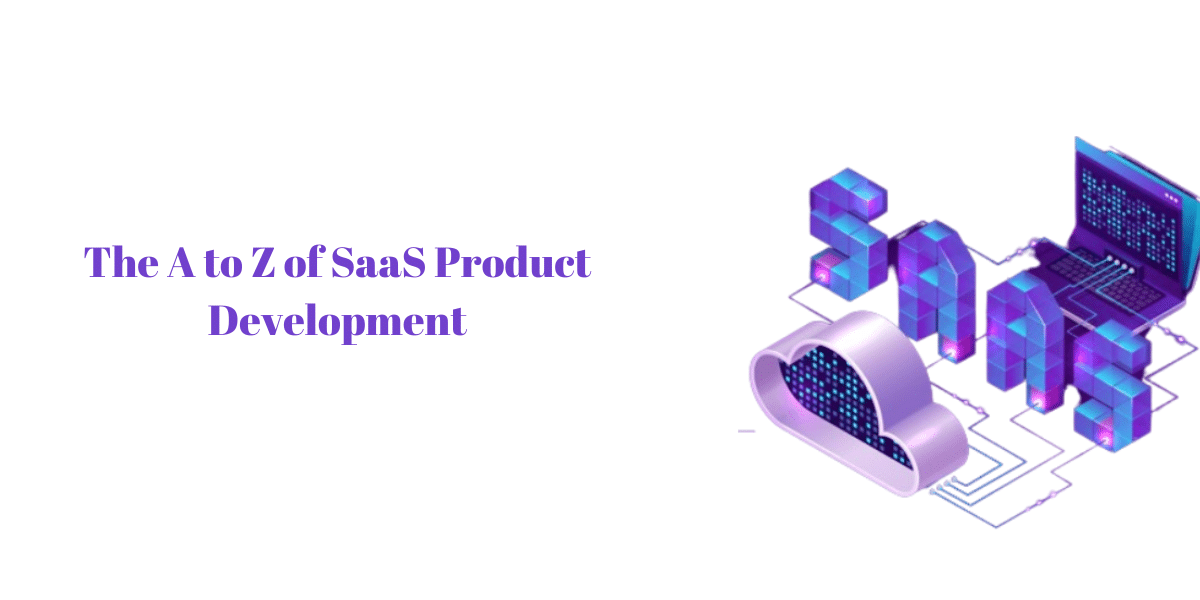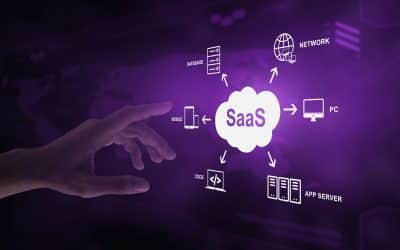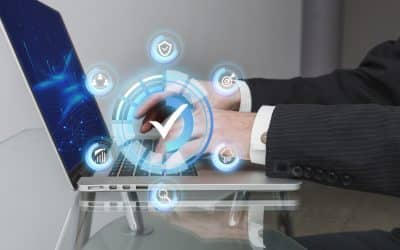Industry estimates indicate that SaaS product development delivery has experienced unprecedented expansion over recent years and now serves over 124,000 customers. Experts anticipate it may surpass US$234 billion by 2028 as digitization trends propel demand for cloud solutions such as SaaS and private cloud services. SaaS services have quickly won customers over due to their lower costs, flexible pricing structures, and ability to offer custom automated services.
This article introduces SaaS applications and software development processes while outlining some critical differences between SaaS and traditional offerings. SaaS Product Development Company must fully comprehend all elements of SaaS to build SaaS software solutions.
What Is a SaaS Product?
SaaS (Software as a Service) refers to software delivered over the Internet instead of traditional license purchases; customers rent software continuously. Unlike conventional desktop or mobile software applications, however, SaaS applications can easily be accessed with web browsing or a mobile device without downloads, further differentiating themselves from conventional ones.
SaaS software enables global access and allows customers and developers to utilize it simultaneously while developers develop updates. SaaS applications and products are easily accessible since they’re hosted and built online in the cloud environment. While most SaaS programs operate solely within such computing environments, some might still qualify as being offered through this means. Other services may even be created locally before being uploaded onto servers in this same virtualized cloud space environment.
SaaS gives users access to ready-to-use applications via mobile devices or web browsers without the hassle and costs associated with downloading software. They rent or subscribe instead and pay an access fee. To run smoothly, an active internet connection is required for applications and tools we rely on daily – such as Windows, Slack, Google Docs, Canva, Salesforce, or Azure.
What Are The Advantages Of SaaS Software?
SaaS software has quickly become more well-known than traditional solutions due to several vital reasons and provides numerous advantages to companies and organizations using such a model:
As there’s no setup required with Cloud applications on local machines, no setup time is needed. However, traditional apps may require setting up an individual system, and your company infrastructure must support its specific software model. SaaS apps require fewer resources and do not need to be set up or configured before use.
Scaling Adaptively
Cloud infrastructure can expand when required to accommodate an increasing user count, and SaaS software quickly meets business demands. Although cloud pricing might increase slightly over time, infrastructure upgrades do not incur costs that contribute directly to maintaining SaaS applications, thereby helping keep costs under control and further cutting SaaS costs down the line.
Traditional software licensing costs can be extremely costly; therefore, they typically fall within capital (CAPEX) expenses. A simpler payment model exists. SaaS software-as-a-service platforms have monthly fees that qualify as operational expenditures (OPEX) yet do not create financial strain. Users can opt-out anytime but must still pay an annual subscription.
SaaS software operates within a cloud environment, making users accessible on any device at any time and from any location. Thus, home-based work-from-home strategies are readily available at all times. Traditional desktop-only software cannot compete against SaaS, which can be accessed across multiple devices at the same time.
Traditional software upgrades typically involve purchasing and installing an upgrade bundle; SaaS provides continuous advancement and innovation, allowing customers to instantly take advantage of the latest updates.
User-Friendly SaaS Service Providers
This allows customers to experience all the software’s features and functions before signing a contract. This approach will enable people to assess whether the software meets their requirements before buying it.
This method offers numerous advantages. First, users can evaluate the software without incurring upfront costs—particularly beneficial to businesses searching for alternative ways of using the program without incurring extra expenses. Customers can also thoroughly test any program before making their commitment, ensuring they get an exceptional price and fulfill all requirements of their individual situations and needs rather than purchasing software that only fulfills some part.
Security Concerns
When developing SaaS software, security considerations become even more paramount. Multiple tenants access SaaS platforms simultaneously, and users’ data privacy must remain paramount. Applications developed with SaaS must also protect against misuse of cyberattacks by employing multi factor authentication, which is essential here.
SaaS applications are suitable for businesses of all sizes. Their scalability enables consumers and organizations to use them regardless of size or specialization; G Suite and Dropbox services don’t target specific demographic segments, so that anyone can take advantage of them.
Analysis Of Statistical Data
Every business must closely monitor its processes and results to assess where improvements may be possible and which areas need special care. SaaS software gathers relevant data before providing insightful analytics that gives users critical knowledge.
Types of SaaS Software
SaaS software can be divided into various subcategories; below are just some of them:
Customer Relationship Management (CRM) software
SaaS vendors like Salesforce or HubSpot provide tools for creating and managing customer relationships. Also for estimating sales volumes, managing marketing activities and leads, and offering dashboards and analytics reports on sales activities.
Software To Manage Projects
Cloud-based project management solutions, such as Asana, Jira, and Trello, are ideal for efficiently overseeing remote work projects.
eCommerce Software
Software to manage online stores, such as Shopify and Shopify Connect, offers connectivity with chains, payment systems. All the other tools needed for building and running an e-commerce storefront online.
Enterprise Resource Planning (ERP) Software
Modern cloud-based ERP systems feature advanced data analysis software designed to assist firms in processing vast volumes of information efficiently. For instance, Oracle ERP Cloud is one such example of such a solution.
SaaS Tools For Collaboration
Remote collaboration solutions like Miro and Zoom have become increasingly popular among remote teams. They help them communicate, collaborate, share files and documents, and conduct video calls effectively. Hootsuite provides marketing software applications designed to assist marketers in reviewing and creating marketing strategies by organizing communications across platforms and publications.
Human Resource Management (HRM) software
It helps managers organize information regarding potential employees, manage post-employment advertisements, monitor engagement/performance metrics, and oversee payroll procedures for staffers.
Vertical SaaS Software
Vertical SaaS applications are intended to assist market players within particular segments. Procore is one such control tool designed for construction industry users.
SaaS can impact development strategies. Once it comes time for launch, competition with rival SaaS businesses could become fierce for market presence. Try breaking in through SaaS businesses that have already been established five to ten years prior; otherwise, consider time to market when setting delivery goals and prioritizing features when creating your SaaS development strategy plan.
SaaS products are typically created for development. To remain relevant and competitive in today’s marketplace, these solutions constantly change with new features or market segments being expanded. Technology stacks and architecture must be selected to allow constant adaptability while being easily scalable when new customer bases emerge.
Although challenging, you must manage this challenge successfully, as 78% of businesses store sensitive customer data within SaaS applications. As part of their responsibility to manage personal information by GDPR, CCPA, PIPEDA, DPA, or similar local legislation, storage tools must be selected based on these criteria.
Make A SaaS Product Step-By-Step
If you are thinking of ways to create software by hand, it’s logical that you’ll need the guidance of an expert to get through the process without fear. However, please don’t fret; we’ve put together a step-by-step tutorial you can follow. Could you go through it?
Market Study
The initial step to creating a SaaS solution is intensely studying the marketplace. This involves understanding your main competition, comparing their product to your own, determining emerging trends, and identifying the requirements of your target market. You should not focus on these separately; instead, you should analyze your end users’ issues by conducting surveys, observing their experiences, and finding ways to address them using your software.
Plan Of Business
When developing SaaS software, you must make time for structured business planning. You will finish in a document with your business’s vision, mission, values, and the software’s capabilities. In addition, your business strategy must include projections of financials (funding and profit estimations), a detailed marketing plan (content production and sales channels, SEO), and a risk analysis (with an action plan for overcoming any possible intervention).
Wireframes For UX And UI Design Prototyping
Once you’ve clarified your vision of your software’s future, you’re ready to go on into the SaaS development stage of the product by working with UI and UX developers to transform your ideas into a visual form. In most cases, the initial design of the SaaS software design will find its representation in wireframes, which are a diagrammatic outline of the structure you’re creating. You can also leverage AI In Product Design.
The wireframes also outline the most critical features and the actions that the user must carry out. You can then prototype a seamless experience for users on various gadgets. The visualization lets you test your expectations before the development process begins.
Architecture Design
To create the SaaS application, take into consideration SaaS design with care. Your choice will affect the number of users your service will be capable of hosting and serving. The bigger the number of users, the larger your architecture will become, particularly when you wish for your platform to avoid interruptions by bugs or a slowdown, as well as the loss of your clients. Since SaaS services are cloud-based, your Amazon Web Services, Azure, or Oracle choices may vary.
Testing And Development
Suppose you’ve worked hard through the prior SaaS phases of software development and are now in the correct position to design a SaaS product. It would help if you created an MVP and then tried the waters before you included more features in the service.
Continuous development can protect your investment and guide you toward the best business option after user feedback is gathered and analyzed. Additionally, it is expected that the QA team will do their part by enhancing the quality of the product by following both automated and manual testing. This method guarantees that your product conforms to guidelines and compliance requirements.
Release And Deployment
After your product is well-tested and some issues are fixed if needed, it’s time to move to deployment—installing the software product on a hosted environment before it becomes available to the end users (release). The process is typically handled through a third-party SaaS service provider. Your task is to test the performance of your application, track the initial sales, and gather the feedback of your initial users before launching huge sales.
Methods For Building A SaaS Product
Business leaders anticipate that half of their revenue in 2026 will come from services and products that have yet to be developed. In addition to many other revenue streams, SaaS products bring companies closer to more growth, provided you can get your hands on the idea. Below, we’ve listed the key elements to help you succeed in your SaaS creation process.
A Quick Test And Learn Cycles
Customer feedback is usually considered input, the foundation for product specifications. Understanding customers’ needs and making them the central point of software development is crucial.
From initial ideation to post-MVP enhancements, constant testing and refinement based on your client’s feedback are essential before launching an actual product. This method is fundamental to Agile, allowing businesses to test with real users and discover improvements. By doing so, you develop knowledge rather than tasks and can create a constant improvement process.
Making The Most Of Existing Data And Digital Assets
If your company is established, you likely have the ingredients to create a product that meets your client’s requirements. By tapping into your existing data and digital assets, you’ll discover potential opportunities based on your customers who have previously interacted with you and use them to lower the cost and time involved in developing.
To create products based on existing assets, SaaS companies need a comprehensive and transparent infrastructure for data in which no silos hinder innovations. When data is isolated, it can be the property of a few departments and can’t be utilized thoroughly to produce an extensive data overview. Additionally, it is possible to fill in gaps or enhance the data using third-party sources to ensure it is complete to launch a brand-new product.
Plan For Scale
SaaS platforms stand out because of their simple, on-demand scaling. Scalability is a critical factor in a platform’s design. It is a constant and thorough roadmap that meets the rate of change and allows teams to change direction quickly. Contrary to static planning and static roadmaps, dynamic ones are made to be flexible and thrive with real-time input from customers to improve rapidly.
From a technological perspective, a product ready for growth must be built on a flexible structure based on microservices and APIs, which allow simple access to algorithms, data, and other processes. The decoupled architecture enables the team to build functions independently and dynamically assign resources to the required services.
Responding To Customer’s Real Needs
A product still needs to be developed. For your SaaS product to be effective, you must ensure it evolves to meet your client’s ever-changing requirements. Incorporating tracking and analytics in your software will give you a greater understanding of high-value and low-value functions while allowing you to focus on what is most important to your clients.
Converting Traditional Applications To SaaS
It’s unique, but do you own an application you want to change into a more sustainable SaaS model? Let’s explore what you can achieve.
Examine Your Application
Evaluate the current app’s strengths and competitiveness. Determine the necessary adjustments to transition the application to the SaaS model. Focus on increasing customer value, cost-effectiveness, and a differentiated market.
Create and restructure your team. Switching to the SaaS model and leveraging AI In Product Development could require restructuring the team. Your team members should be trained in cloud-based technologies and SaaS best practices. When needed, employ additional staff with knowledge in these areas.
Pick A Cloud Service Provider And Then Migrate
Make the crucial decision to choose the best cloud service. Consider your choices based on the ability to scale, security, and assistance. Plan your migration with care to prevent disruptions and preserve data security.
Revision Of Post-Migration Strategy
After migration, update your support and marketing strategies to conform to the SaaS model. Be prepared for continual adjustments and updates because the SaaS model requires continuous improvement and responsiveness to user feedback.
Factors Affecting SaaS Product Development Cost
What is the cost of developing a SaaS product that sets you back? The price of creating the SaaS product is based on a variety of important factors, including the following:
UI and UX style
The UX (user experience) is critical in forming a positive impression for users of your SaaS application. The more engaging and lively your UI (user interface) is, the more engagement your users can enjoy.
Ensure you employ expert designers who can comprehend your customers’ needs and meet the appropriate requirements.
Server
A SaaS product’s existence created by SaaS Product Development Company rests on having a designated space on a server. The choice of the correct server is the key to the SaaS product’s sustainability and efficiency in terms of security, effectiveness, and reliability.
Users can access your company’s services through a hosting service provider’s server. Therefore, knowing the hosting company’s different requirements is essential to establish a reliable connection.
Monitoring Of Product Quality And Its Maintenance
Many post-development SaaS products require expenditures. Because SaaS is cloud-based, tracking every errand is more crucial. Serving your users remotely with a SaaS product may sometimes be challenging. Thus, continual checking and maintaining are vital. Although this could cost you some extra money, keeping your equipment in the long run is crucial.
Testing And Development Of Products
The price of the people you employ to build and verify the SaaS product may vary depending on the tech stack, the complexity of your project, and many other factors. Therefore, finding a skilled person aware of your project’s objectives and who makes your entire experience worthwhile is essential.
Conclusion
This article will provide practical tips and ideas for transforming an application’s functionality to the SaaS concept. The process involves more than technology; it focuses on redefining your goals, reorienting your team, and changing how you interact with your users.
The digital world proliferates, and the key to a successful SaaS business is your team’s ability to be fluid, always tuned to your customer’s requirements, and open to change. Your journey to SaaS goes beyond creating a product; it’s about ensuring your solution expands, evolves, and excels in an ever-changing technological landscape.
Therefore, whether you’re at the beginning of your journey or gearing up for significant changes, remember that within the realm of SaaS, it’s all up to the limit.
Frequently Asked Questions
What are SaaS services?
SaaS products are online software available to users of all ages. SaaS applications are used worldwide. A few of the most popular web-based platforms, like Zoom, Google Apps, and Dropbox, are SaaS-based.
In the 1990s, the concept of SaaS product development became more well-known among entrepreneurs since SaaS has been one of the most successful and viable business models.
How do you build a SaaS product?
To create a SaaS product, you must know every aspect of transforming your concept into a viable product. A SaaS application is one in which you must meet your intended audience and decide what will be used.
Choose the best pricing strategy and technology stack, then create an MVP. After completing the steps and being satisfied with your final product, you can begin building the ultimate SaaS product.
What is the reason why you should build a SaaS application?
As more organizations move towards digital transformation, this is an ideal time to develop SaaS applications. This is particularly true for those who provide an industry-specific service that is unique and addresses its specific pain issues. Entry into the SaaS market can increase revenue and help take your company to a new step.











